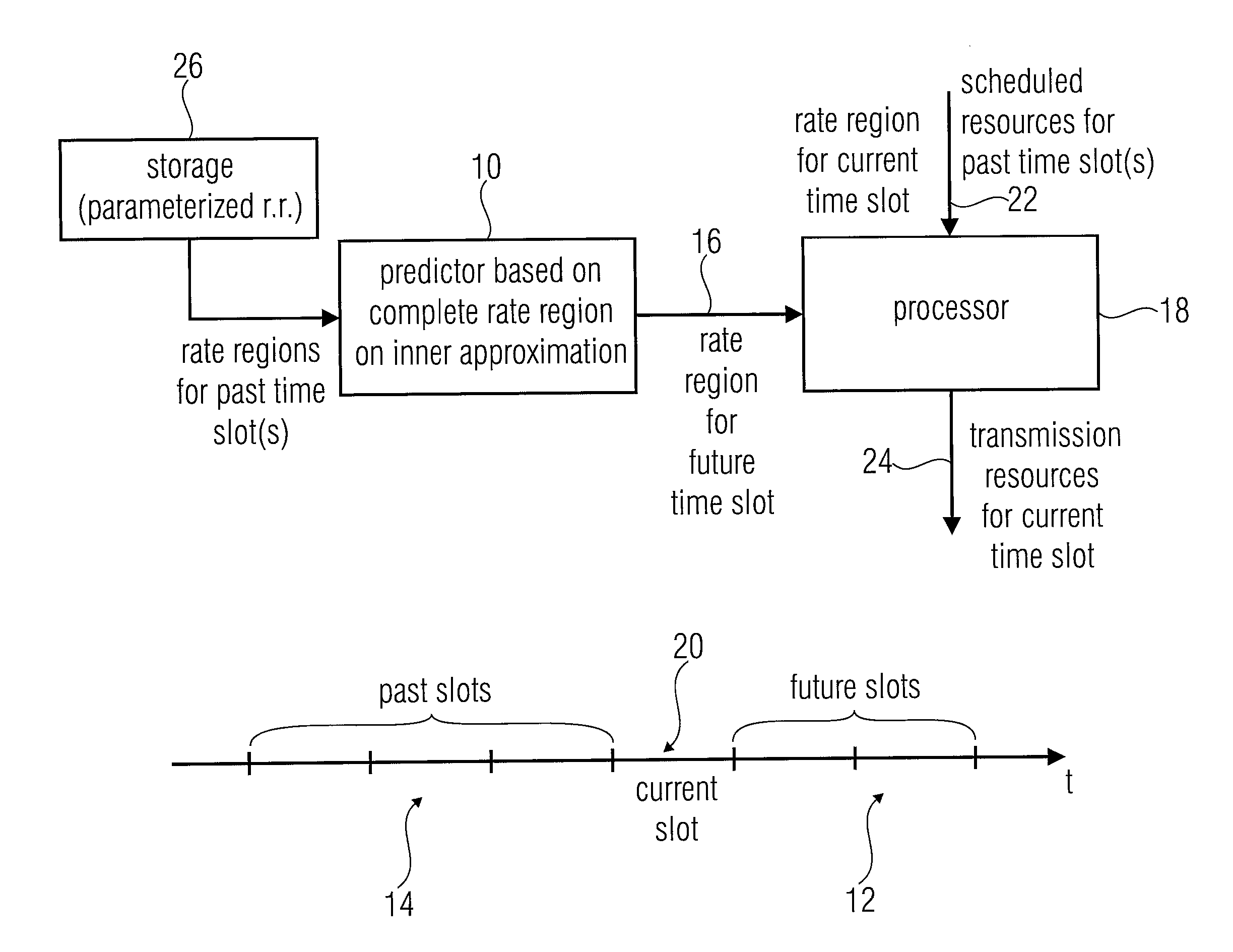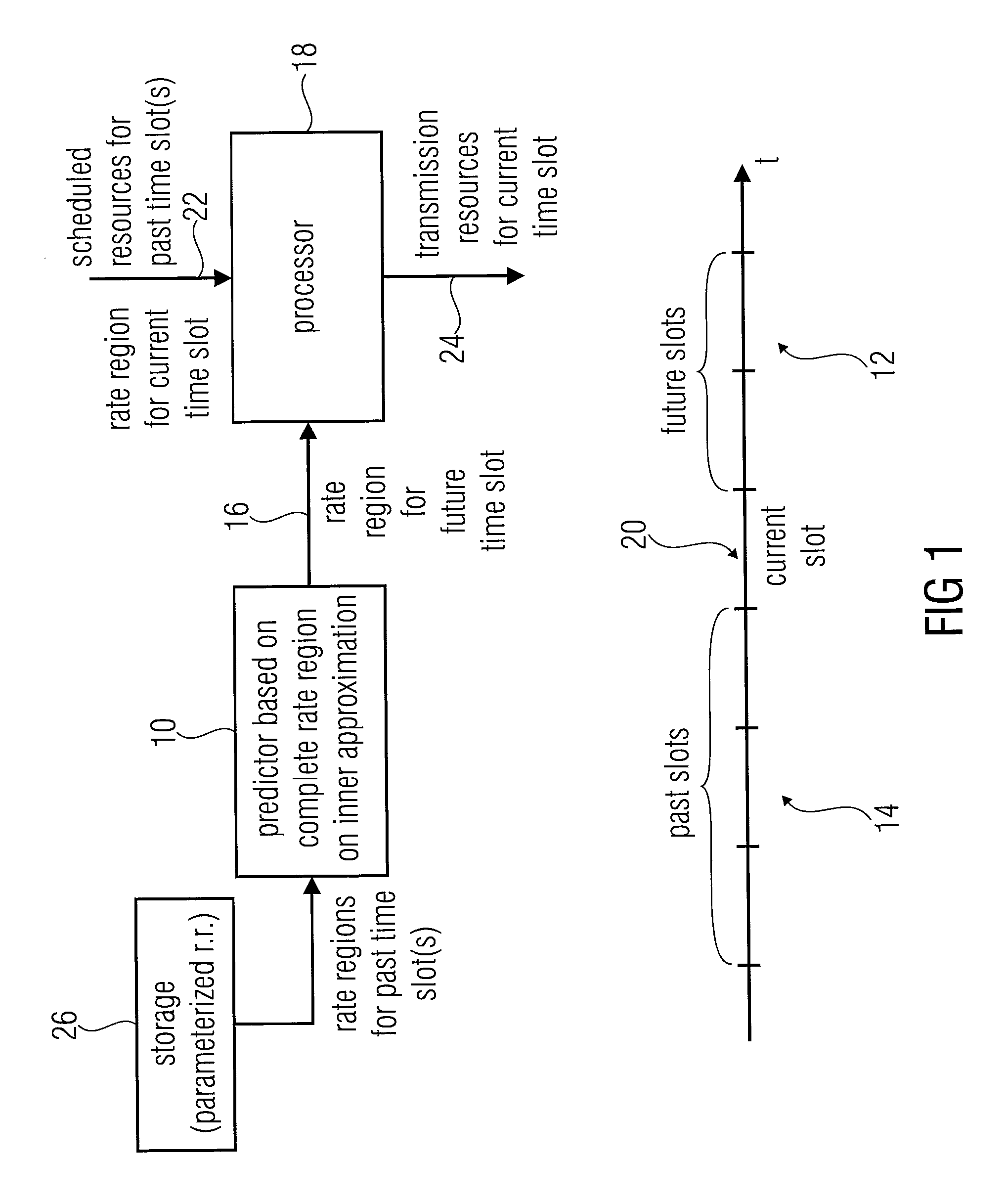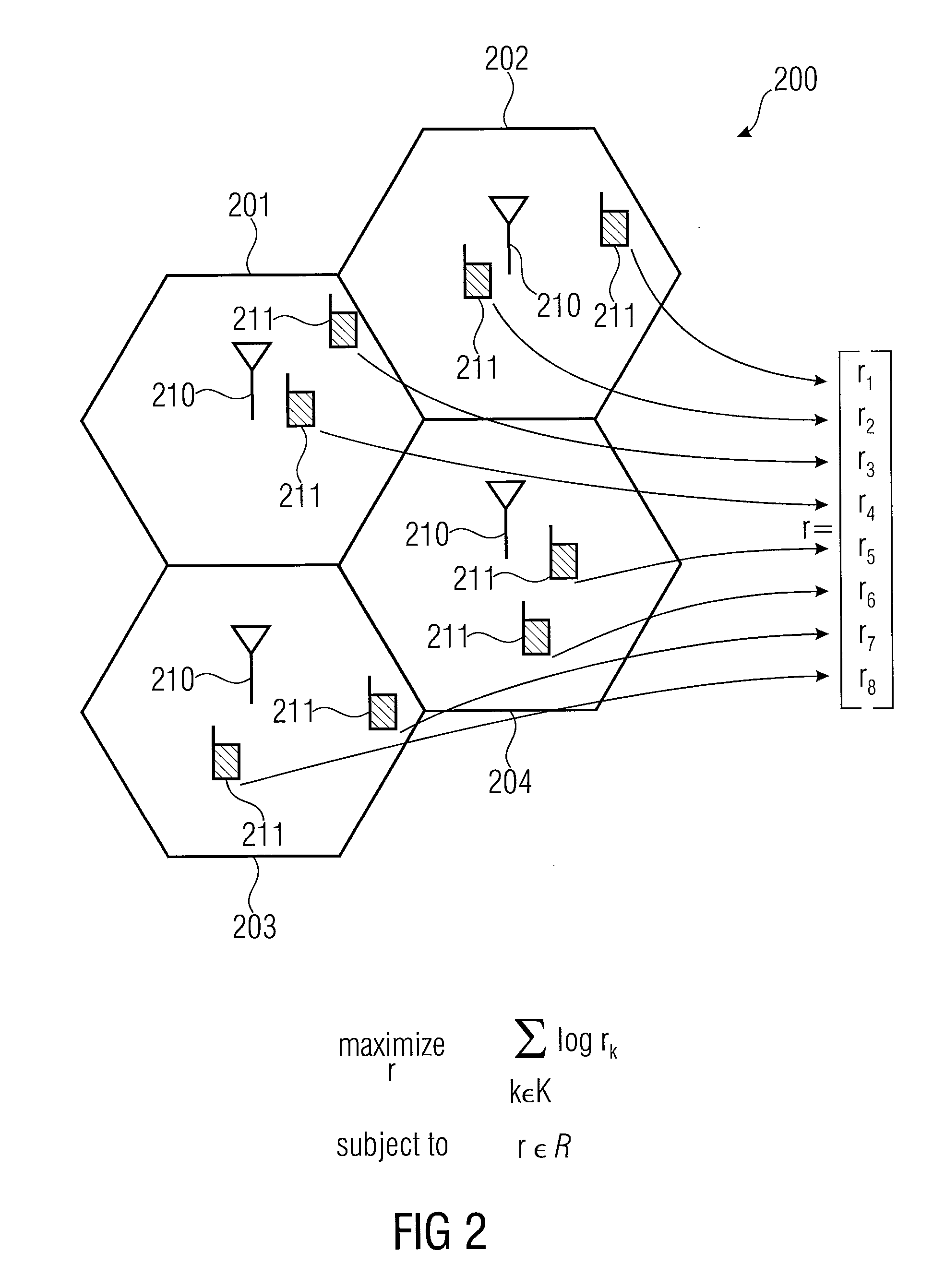Apparatus and method for scheduling transmission resources to users served by a base station using a prediction of rate regions
a technology of rate region and transmission resource, applied in the direction of radio transmission, electrical apparatus, transmission, etc., can solve the problems of forward extension of the pfs rule, complex interdependence of user rate, unfair use of users, etc., to increase the weight of users, good transmission channel, and high data rate
- Summary
- Abstract
- Description
- Claims
- Application Information
AI Technical Summary
Benefits of technology
Problems solved by technology
Method used
Image
Examples
Embodiment Construction
[0054]FIG. 1 illustrates an apparatus for scheduling transmission resources to users served by a base station equipped with a plurality of antennas in accordance with a preferred embodiment.
[0055]Base stations are, for example, illustrated in FIG. 2 at 210 and users associate with base stations are illustrated in FIG. 2 at 211. Particularly, each of the base stations 210 in FIG. 2 is equipped with a plurality of antennas in order to obtain an MIMO scenario. Furthermore, the users 211 of FIG. 2 can have one or a plurality of different antennas. When the users 211 themselves have a plurality of antennas, more complex beamforming scenarios can be formed compared to the situation where only base station 210 has a plurality of antennas and each user only has a single antenna.
[0056]Furthermore, FIG. 2 illustrates a cellular system where there are several cells 201 to 204, and each base station serves the users associated with the cell, in which the base station is placed. However, in acco...
PUM
 Login to View More
Login to View More Abstract
Description
Claims
Application Information
 Login to View More
Login to View More - R&D
- Intellectual Property
- Life Sciences
- Materials
- Tech Scout
- Unparalleled Data Quality
- Higher Quality Content
- 60% Fewer Hallucinations
Browse by: Latest US Patents, China's latest patents, Technical Efficacy Thesaurus, Application Domain, Technology Topic, Popular Technical Reports.
© 2025 PatSnap. All rights reserved.Legal|Privacy policy|Modern Slavery Act Transparency Statement|Sitemap|About US| Contact US: help@patsnap.com



